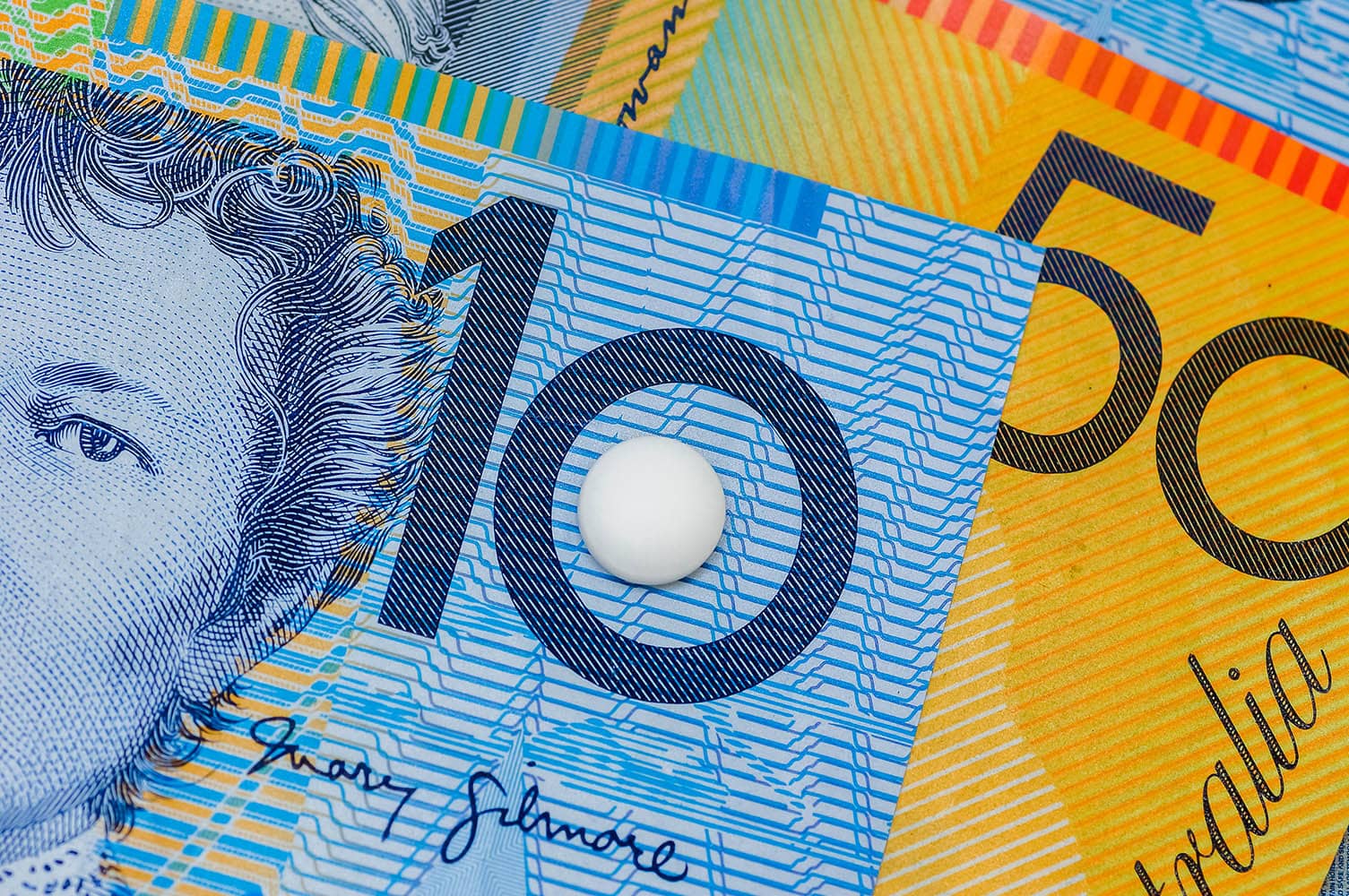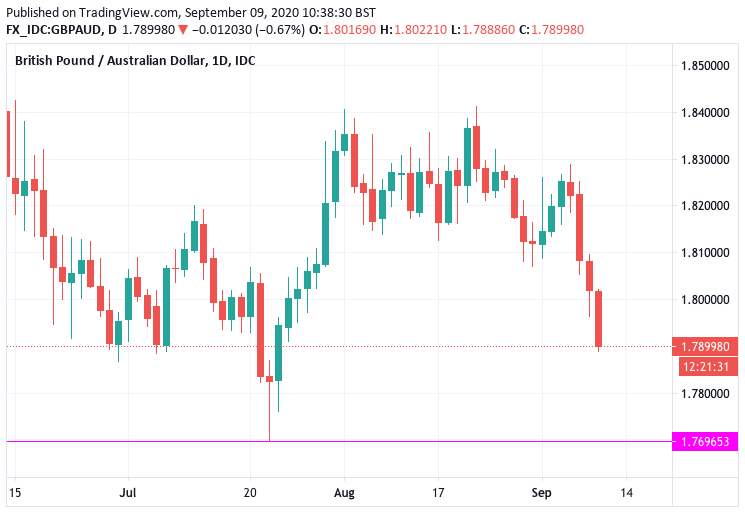Pound-Australian Dollar Rate Set for Test of 2020 Lows
- GBP/AUD breaks out of Aug range
- 2020 lows next major focus
- GBP/AUD falls in both 'risk on' and 'risk off' markets

Image © Adobe Images
- GBP/AUD spot rate at time of publication:
- Bank transfer rates (indicative guide):
- Specialist transfer rates (indicative guide):
- More information on specialist rates here
The sell-off in the Pound-to-Australian Dollar exchange rate extends into the mid-week session with a further half percent loss taking the pair to 1.7891, indications are that a test of the 2020 lows located at 1.7696 is highly likely over coming days.
GBP/AUD has already fallen 1.82% this week, with momentum indicators advocating for further losses.
"GBP is vulnerable to additional downside against USD, EUR and AUD because the risk of no trade deal between the UK and the EU is high. Trade negotiations resume today and a breakthrough seems unlikely. According to the Financial Times, the UK government is expected to publish a draft law (Internal Market Bill) on Wednesday that is designed to override parts of the Brexit withdrawal agreement. This could derail trade negotiations with the EU and further weigh on GBP," says Elias Haddad at Commonwealth Bank of Australia.
The obvious target markets will be eyeing is the 2020 low at 1.7696 which is fast coming into view. The Pound had been as high as AUD 2.06 in March, meaning the UK currency has now shed 5.70% of its purchasing power. (If you are looking to lock in current rates for use at a point in the future, thereby protecting your budget, please find out more here).
The 2020 highs came amidst a rout of global stock and commodity markets as the covid-19 pandemic swept across the globe forcing countries to lock down their populations, resulting in a slump in economic activity.
The Australian Dollar is considered a 'high beta' currency that tends to track moves in global markets, meaning the post-March recovery in equities and commodities has benefited the Aussie currency.
Interestingly however, the Australian Dollar did not lose out to Sterling over the course of the past week when a substantial market correction lead by the U.S. tech sector saw trillions wiped of global markets.
Instead, the GBP/AUD exchange rate has fallen, suggesting those watching the pair can no longer rely on the assumption that one driver of potential upside is the state of global markets.
In short, because GBP/AUD falls in both 'risk on' and 'risk off' markets the bias certainly favours the Australian Dollar at this juncture.
The focus of Sterling's woes lies with a noted deterioration in sentiment surrounding Brexit trade negotiations that has seen markets lower their expectation for a deal being struck by year-end.
Tensions have risen this week after the UK signalled it would bring forward legislation this week that would override some of the elements of the withdrawal treaty struck with EU in 2019 pertaining to Northern Ireland.
The UK says this is necessary to tie-up ambiguities concerning the future functioning of the UK market, while critics say it amounts to a breach of international law and would hurt the UK's standing on the international stage.
Either way, the theatrics surrounding Brexit negotiations are certainly back in focus and nerves are expected to remain elevated right through to a crunch October summit of EU leaders that would ultimately determine whether a deal is achieved or not.
Expect downside pressures to ease at some point as traders will not like to be overly exposed to Sterling downside heading into October in case a deal is in fact struck.
"GBP bears may be assuming little will come from this week’s trade talks, although as ever it seems with politics and Brexit, there is an expectation that even if this week’s talks fail, there might yet be an 11th hour positive result before the 15 October deadline," says Clyde Wardle, Senior EM FX Strategist at HSBC.
Given this expectation, we would suggest that levels below the 2020 low at 1.7696 in GBP/AUD could start to look too cheap.
Data out of Australia over the past 24 hours has meanwhile been on the supportive side. Consumer sentiment rebounded 18% in September having fallen 10% in August.
Both the current conditions and future expectations indexes rose 14% and 21% respectively in September.
"Westpac Consumer Sentiment bounced sharply in Sep even with data confirming Australia's first recession in 30 years. The index is just below levels at the end of 2019. The headline print jumped from 79.5 to 93.8, and somewhat surprising was the 14.9% jump in sentiment in Victoria," says a note from TD Securities.
Further data showed new lending for housing rose 8.9% in July, taking it back towards pre‑lockdown levels and suggests the housing market will firm. Economists at CBA have upgraded their house price forecasts as a result and are now looking for a national peak to trough fall of 6% (previously: 10%).
Owner-occupier approvals (excluding refinancing) rose +10.7% m/m which makes for the largest jump in nearly 10 years, with investor approvals +3.5% m/m, up for the 2nd month.











